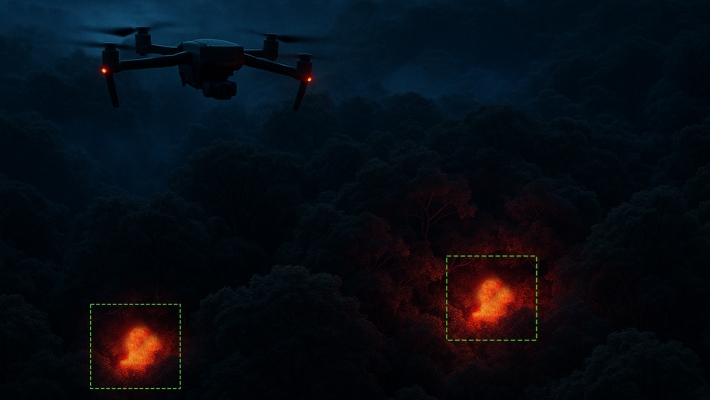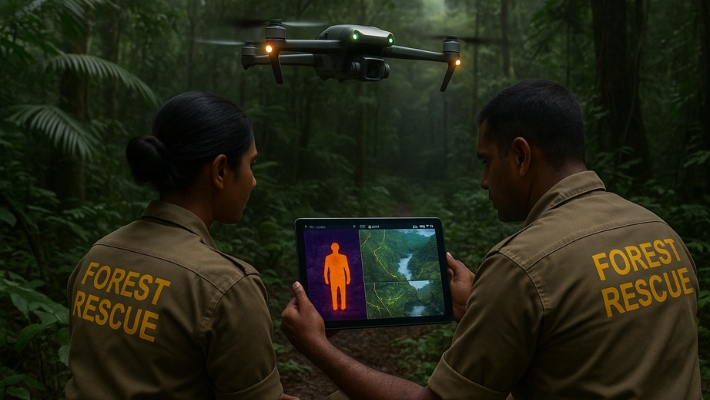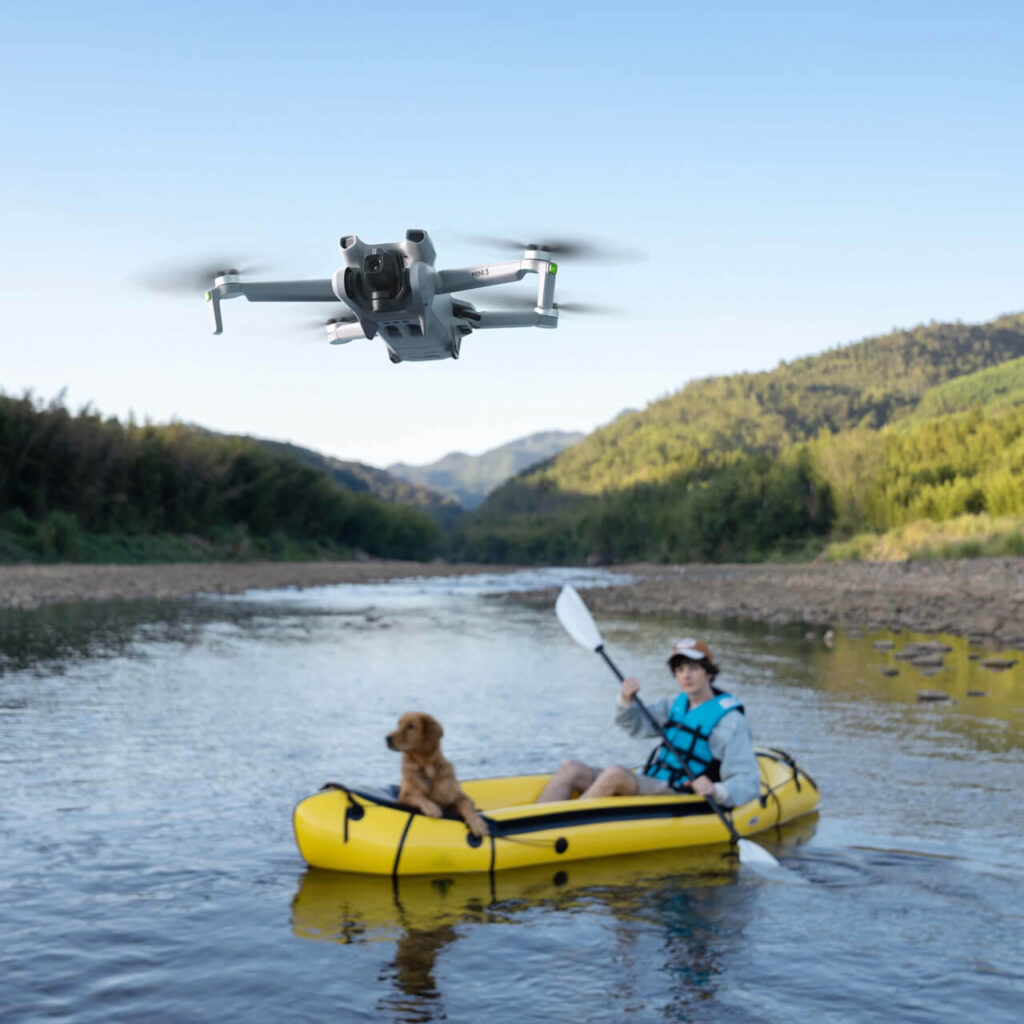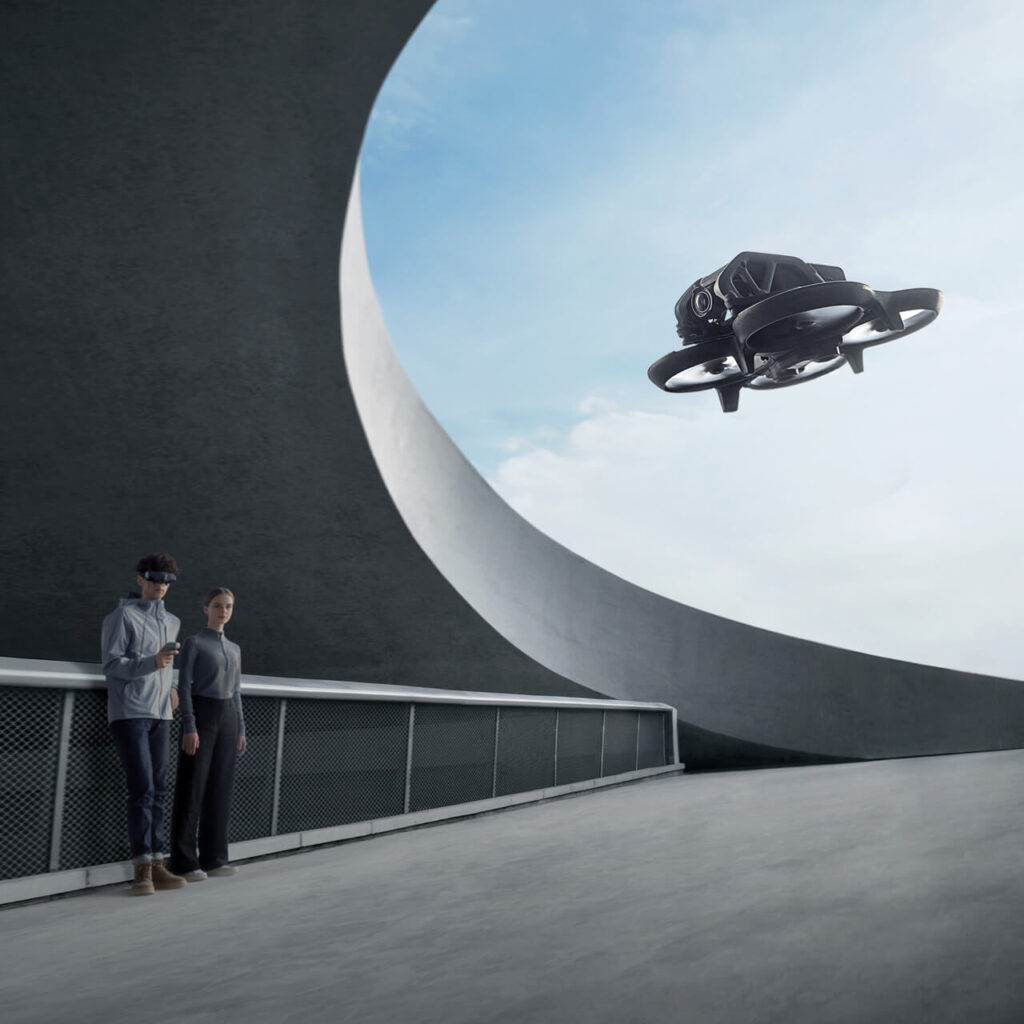Forests are vast, dense, and unpredictable. When someone goes missing in a jungle or hilly terrain, every second counts but traditional rescue methods can be slow, risky, and limited by poor visibility or harsh conditions.
That’s where drones come in.
Equipped with high-resolution cameras, thermal imaging, and long-range capabilities, drones have become a powerful tool for forest search and rescue (SAR) teams. Whether it’s locating stranded trekkers, spotting heat signatures in thick foliage, or coordinating emergency supplies, drones can do what boots on the ground often can’t and they can do it faster, safer, and more accurately.
In this guide, we’ll explore:
- Why drones are game-changers in forest rescue
- Which drone features matter most in such missions
- The best models from DJI and Autel for jungle SAR
- Real-world use cases
- And how teams can source the right equipment through trusted sellers like Jetayu Gadgets
Because in a life-or-death situation, the right tech can make all the difference.
Why Forest Rescues Need a New Approach

Traditional forest search and rescue missions face several challenges:
- Dense tree cover blocks aerial visibility
- Difficult terrain slows down ground teams
- Limited daylight affects tracking efforts
- Wild animals or unpredictable weather increase risks
Time is critical in such operations. Whether it’s locating missing hikers, lost children, or injured travelers in remote areas, delays can mean the difference between survival and tragedy.
Enter Drone Technology
Drones provide what even helicopters and ground patrols can’t:
A fast, flexible, and lower-risk way to scan and track over large, inaccessible forest areas.
Here’s why they’re changing the game:
- Thermal cameras detect body heat, even in thick foliage or low light
- GPS tracking and autonomous flight paths allow for broad area coverage
- Live feeds help command centers make real-time decisions
- Compact drones like the DJI Mini 4 Pro are lightweight and easy to deploy on foot in rugged areas
Whether you’re comparing the DJI Mini 3 vs Mini 4 Pro for compact field use, or exploring the DJI Fly More Combo for extra batteries during long searches, rescue teams today are no longer just relying on manpower.
And if you’re worried about drone crashes during critical missions, DJI’s built-in obstacle avoidance and return-to-home features offer peace of mind especially in unpredictable jungle settings.
Top Features That Make Drones Essential in Jungle Search and Rescue

When someone goes missing in a dense forest, your equipment needs to do more than fly it needs to see, sense, and support the mission. Modern drones, especially from DJI and Autel, are packed with features that directly address the challenges of forested environments.
1. Thermal Imaging for Heat Detection
- Critical for spotting humans through thick vegetation or during nighttime
- Helps differentiate between humans, animals, and terrain
- Autel’s EVO II Dual 640T and DJI’s Mavic 3T come equipped with advanced thermal sensors
2. Long Flight Times
- The larger the area, the longer the drone needs to stay in the air
- DJI Fly More Combo options come with extra batteries, which are crucial for extended rescue operations
- Drones like DJI Air 3 offer over 40 minutes of flight time, making them highly efficient in SAR missions
3. High-Resolution Cameras
- Visual clarity matters when identifying movement from a high altitude
- 4K and zoom capabilities help rescue teams pinpoint details in real time
- Ideal for both scanning terrain and reviewing footage later
4. GPS Accuracy and Intelligent Flight Modes
- Enables pre-programmed grid searches and precise tracking
- ActiveTrack and Waypoint mode can automate large-area sweeps without manual piloting
- Useful in missions where forest layout is already mapped
5. Obstacle Sensing and Avoidance
- Forests are filled with tall trees, branches, and uneven terrain
- DJI drones like the Mini 4 Pro and Air 3 offer multi-directional obstacle avoidance
- Reduces crash risk, especially in high-pressure or low-visibility moments
Tip: If you’re just entering the world of drones for rescue or professional use, it’s worth understanding why your drone’s weight decides what rules you follow and whether you need a license to fly in restricted or forested zones. Some drones, like the DJI Mini 4 Pro, make it easy to comply with government guidelines while still delivering serious performance.
Best Drones for Jungle Rescue: Top Picks from DJI and Autel
Choosing the right drone can make a critical difference in forest-based SAR missions. Whether you’re an NGO, forest officer, or state disaster response unit, these are the top models that combine reliability, performance, and SAR-ready features.

Note: If you’re flying drones in forest regions near urban zones or border-sensitive areas, it’s important to understand the legal rules. Our guide on “Can I Fly My Drone Freely or Do I Need a License?” breaks this down for Indian operators.
Also, if you’re considering buying a drone but unsure whether to go for a brand-new or refurbished model, you might want to explore “Bought a Drone Recently? Here’s How to Verify If It’s Not Refurbished” or “New to Drones? Here’s Why Refurbished Is the Smartest Way to Start.”
Real-World Scenarios Where Drones Have Saved Lives in Forests
Across India and globally, drones have become silent heroes in forest rescue missions. Their ability to reach remote areas, scan wide terrains quickly, and deliver live data has led to several life-saving outcomes.
Here are a few real-world examples and scenarios:
1. Rescue of a Missing Trekker in Himachal
A solo trekker lost communication while exploring a dense trail in the Parvati Valley. Rescue teams used a thermal-equipped drone to scan dense patches where visibility was low. The drone spotted a heat signature 2 km from the last known location leading to a successful rescue within hours.
2. Flash Flood Response in Northeast India
In 2024, parts of Assam and Meghalaya faced flash floods and landslides. Rescue operations deployed Autel drones to:
- Survey inaccessible areas
- Deliver water bottles and emergency kits via drop modules
- Locate survivors trapped on rooftops or tree canopies
This kind of response highlights what we explored in another piece: “Drones Could Be Heroes in the Northeast’s Flood and Landslide Crisis.”
3. Tracking Lost Tourists in Jim Corbett Forest Zone
Tourists strayed from the trail during a wildlife photography expedition. Due to the risk of wild animals, night-time search wasn’t feasible for ground teams. A DJI Mini 4 Pro, lightweight and agile, was flown in with thermal assist. The tourists were located in under 20 minutes.
Thinking about buying a drone for adventure filming or nature treks? Read: “Vlogging Your Solo Adventure? Here’s What Only a Drone Can Film.”
What to Look for Before Buying a Drone for Rescue or Emergency Use
Buying a drone for forest rescue isn’t the same as buying one for content creation or casual flying. Here’s what you need to prioritize before making a purchase:
1. Thermal Imaging and Night Vision
- Vital for night searches or low-visibility environments
- Ensure the drone supports FLIR-grade thermal sensors
- Autel EVO II Dual 640T and DJI Mavic 3T are strong choices here
2. Extended Flight Time
- Look for drones with 30 minutes or more in flight time
- Consider buying Fly More Combos for added batteries and quick swaps
3. Obstacle Avoidance System
- Multi-directional sensors help avoid tree branches and uneven terrain
- Particularly useful in dense or unpredictable forest zones
4. Portability and Rapid Deployment
- Lightweight drones like the DJI Mini 4 Pro can be deployed within seconds
- Especially useful for teams on foot in difficult-to-access areas
5. Legal Compliance and Licensing
- Some forest zones are regulated under drone no-fly zones or require pre-approval
Don’t Overlook These Buying Tips:
- Verify authenticity: There are cases where refurbished drones are sold as new. Here’s how to check: “Bought a Drone Recently? Here’s How to Verify If It’s Not Refurbished”
- Rent vs. buy: For short-term use or NGO work, renting could be smarter. Check out: “Why More Creators and Surveyors Are Renting Drones Instead of Buying”
- Upgrade smartly: If you’re moving from an older model, consider selling first. See: “Upgrade Time? Sell Your Old Drone with Just a Few Clicks”
FAQs About Using Drones in Forest Rescue Missions
1. Do I need a drone license to use it for rescue missions in India?
Yes, for most drones over 250 grams or used in official capacity, you’ll need to register the drone and get permission through India’s Digital Sky platform.
2. Which is better for forest rescue: DJI or Autel?
Both offer excellent options. DJI is known for user-friendly controls and reliability (e.g., Air 3, Mavic 3T), while Autel offers superior thermal imaging and battery life (EVO II Dual 640T). Your choice depends on your mission’s needs.
3. Can drones be used during the night in forests?
Yes, with the right equipment. Drones like Autel EVO II Dual or DJI Mavic 3T come with thermal and night vision capabilities, making night searches possible and effective.
4. How do I know my drone is not a refurbished model?
Always buy from trusted sellers like Jetayu Gadgets and follow this checklist: “Bought a Drone Recently? Here’s How to Verify If It’s Not Refurbished.”
5. Can I carry my drone while traveling to a forest area?
Yes, but always check drone policies if you’re crossing state lines, entering reserved forest zones, or boarding a flight. For international rules, read: “Can You Carry a Drone with You on an International Flight to India?”



